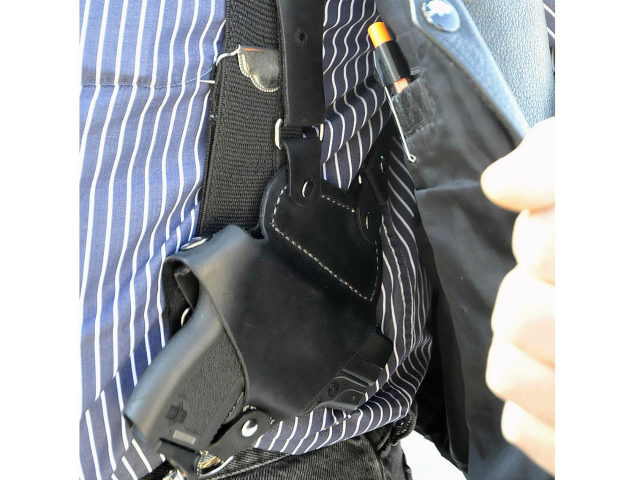Illinois Supreme Court struck down a “1000-foot firearm-restricted zones” by public parks on Thursday, ruling that the zones limit self-defense and violate previous court rulings in favor of carrying guns in public.
The ruling was handed down in People v. Chairez. In it, the Illinois Supreme Court relied heavily on District of Columbia v. Heller (2008).
The State of Illinois also appealed to Heller, arguing that “1000-foot firearm-restricted zones” at public parks did violate the Second Amendment because the U.S. Supreme Court ruled that “laws forbidding the carrying of firearms in sensitive places such as schools and government buildings” were constitutional. However, the Illinois Supreme Court observed that public parks are neither “schools” or “government buildings,” therefore banning guns near them does, in fact, violate the Second Amendment.
Reason published a copy of the ruling, which said:
[N]either Heller nor [McDonald v. Chicago (2010)] expressly limited the second amendment protections to the home…. We find that the 1000-foot firearm restriction … directly implicates the core right to self-defense …. [It] prohibits the carriage of weapons in public for self-defense, thereby reaching the core of the second amendment. Although the firearm restriction at issue is not a comprehensive statewide ban, like in Moore or Aguilar, the restriction is not minimal. The firearm restriction not only covers a vast number of public areas across the state, it encompasses areas this court held in Mosley to be areas where an individual enjoys second amendment protection, i.e., public ways….
The court also noted that from a pratical viewpoint, there is no proof that a 1,000-foot gun-free buffer would reduce crime to begin with:
We certainly accept the general proposition that preventing crime and protecting children are important public concerns. After all, “[g]uns are inherently dangerous instrumentalities.” The State, however, cannot simply invoke these interests in a general manner and expect to satisfy its burden…. [T]he State provides no evidentiary support for its claims that prohibiting firearms within 1000 feet of a public park would reduce the risks it identifies. Without specific data or other meaningful evidence, we see no direct correlation between the information the State provides and its assertion that a 1000-foot firearm ban around a public park protects children, as well as other vulnerable persons, from firearm violence….
The Illinois Supreme Court explained that another problem with the creation of “1,000-foot firearm-restricted zones” is the real possibility that law-abiding state residents will find themselves in such a zone unaware while armed, and face criminal charges:
There is another flaw in the State’s position. The State claims that the restriction is not overly burdensome because there are areas throughout Illinois where one could exercise their core second amendment right…. Indeed an individual can preserve an undiminished right of self-defense by not entering one of the restricted areas. But the State conceded at oral argument that the 1000-foot firearm restriction zone around a public park would effectively prohibit the possession of a firearm for self-defense within a vast majority of the acreage in the city of Chicago because there are more than 600 parks in the city. Aside from the sheer number of locations and public areas that would qualify under the law, not only in the City of Chicago, but throughout Illinois, the most troubling aspect is the lack of any notification where the 1000-foot restriction zone starts and where it would end.
It must be noted that gun-free zones are magnets for mass public attackers who want ply their trade without the threat of facing armed resistance. The “1,000-foot firearm-restricted zones” would have provided attackers with a captive, unarmed group of law-abiding innocents.
AWR Hawkins is an award-winning Second Amendment columnist for Breitbart News, the host of the Breitbart podcast Bullets, and the writer/curator of Down Range with AWR Hawkins, a weekly newsletter focused on all things Second Amendment, also for Breitbart News. He is the political analyst for Armed American Radio. Follow him on Twitter: @AWRHawkins. Reach him directly at awrhawkins@breitbart.com. Sign up to get Down Range at breitbart.com/downrange

COMMENTS
Please let us know if you're having issues with commenting.